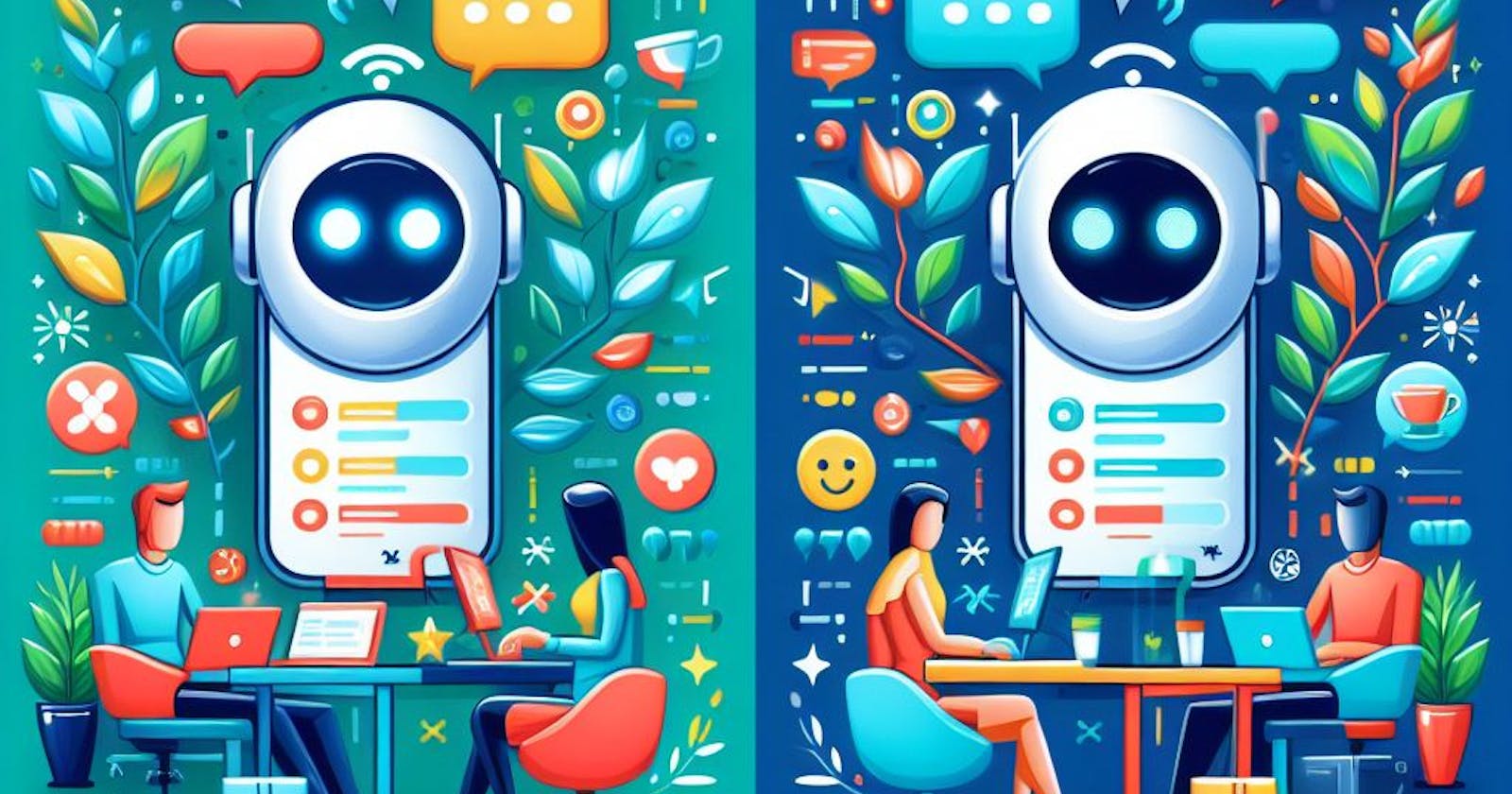Framework Showdown: Rasa vs. Dialogflow for Your Next Chatbot Project
Are you looking for the best chatbot framework for your next project? In this blog, we compare Rasa and Dialogflow
If you are looking for a chatbot platform with natural language processing capabilities, you might have come across some popular options such as Rasa, Dialogflow, Wit.ai, Amazon Lex, and Microsoft Bot Framework, each offering unique features and integrations to cater to diverse needs in the realm of conversational AI. These platforms offer different features and functionalities for creating chatbots for various domains and purposes.
While each of these platforms has its own strengths and weaknesses, today we are going to deep dive into two of the most popular platforms used by a large number of users - Dialogflow and Rasa.
Dialogflow is a product of Google that specializes in natural language interaction technologies. Dialogflow is a fully proprietary product that provides an API and a web interface for building chatbots. Dialogflow was formerly known as api.ai and was acquired by Google in 2016. On the other hand, Rasa is an open source machine learning framework for developers and product teams who want to create more advanced chatbots and seek greater flexibility, control over data, and the ability to deploy chatbots on-premises. Rasa consists of Rasa NLU and Rasa Core. The NLU component deals with intents and entities while the Core component manages dialogues and actions.
Let’s now look at some of the key differences between the two model -
Dialogflow and Rasa are both powerful platforms for building chatbots with natural language processing. However, they have some key differences that you should consider before choosing one. Here are some of the main aspects that you should compare between Dialogflow and Rasa:
Installation: Dialogflow is a cloud-based platform that does not require any installation. You can simply sign up and start building your chatbot right away. Rasa, on the other hand, is an open-source framework that requires you to install multiple components on your local machine or server before you can use it. This can be a bit complicated and time-consuming, especially for beginners.
User-Friendliness: Dialogflow is known for its user-friendliness and ease of use. It has a web-based interface that allows you to create and manage your chatbot without writing any code. You can also use pre-built agents and templates to speed up your development process. Rasa, on the other hand, requires you to write code and configuration files to build and train your chatbot. You also need to have some technical knowledge and skills to use Rasa effectively.
System Type: Dialogflow is a closed system, meaning that it has some limitations and restrictions in terms of customization and flexibility. You have to follow the rules and guidelines of the platform and use the features and functionalities that it provides. Rasa is an open system, meaning that it gives you more freedom and control over your chatbot. You can access and modify the source code, add custom components and integrations, and tweak the settings and parameters as you wish.
Interface for Building Bots: Dialogflow has a web-based interface that makes it easy and convenient to build your chatbot. You can use the graphical user interface (GUI) to design your chatbot's flow, define intents and entities, and test your chatbot. You can also use the code editor to write fulfillment code and logic for your chatbot. Rasa does not have a web-based interface. You have to write JSON or markdown files to define your chatbot's intents, entities, stories, and actions. You also have to use the command line interface (CLI) to train and run your chatbot.
Data Hosting: Dialogflow hosts your chatbot data on the cloud, meaning that you don't have to worry about storage and maintenance. However, this also means that you have to trust Google with your data and comply with their terms and policies. Rasa does not host your chatbot data. You have to host it on your own server or cloud provider, meaning that you have more privacy and security over your data. However, this also means that you have to take care of the hosting and maintenance yourself.
Server Hosting: Dialogflow does not allow you to host your chatbot on your own server or on-premise. You have to use the cloud service that Dialogflow provides, which may limit your data control and sovereignty options. Rasa allows you to host your chatbot on your own server or on-premise, giving you more flexibility and autonomy over your chatbot operations and data.
Integration Capabilities: Dialogflow comes with out-of-the-box integration with many popular platforms and channels, such as Google Assistant, Skype, Slack, Facebook Messenger, and more. This makes it easy and convenient to connect your chatbot with your existing ecosystem and reach a wider audience. Rasa does not have built-in integration with these platforms and channels. You have to use custom connectors or third-party services to integrate your chatbot with them, which may require more effort and resources.
Cost - Dialogflow comes in free and paid versions. The free version, Standard Edition, works for text chats but charges for voice interactions after a small limit. The advanced CX edition has separate chat and voice plans with subscription fees starting at $1,000 per month, but includes generous usage allowance. Both editions charge extra for features like knowledge connectors and additional cloud resources. New users get free credits to try out features before committing.
Rasa too offers both open-source free and paid enterprise. The Open source free plan is perfect for individuals projects or small teams wheres, users can build a chatbot entirely for free using the core Rasa framework and community resources. In the Enterprise plan, Rasa provides managed infrastructure, user interfaces, and dedicated support for mission-critical deployments. Pricing is quote-based and depends on the number of contacts and desired features. Usually this plan is suited for larger companies, high-traffic scenarios, and complex conversational needs.
Conclusion
Dialogflow and Rasa are both excellent chatbot platforms with natural language processing capabilities. However, they have different strengths and weaknesses that you should consider before choosing one. Dialogflow is more suitable for beginners and non-techies who want to build simple and easy chatbots without much hassle. Rasa is more suitable for developers and techies who want to build complex and advanced chatbots with more customization and flexibility. Ultimately, the best chatbot platform for you depends on your needs, preferences, and goals. We hope this article has helped you compare Dialogflow and Rasa and make an informed decision.

